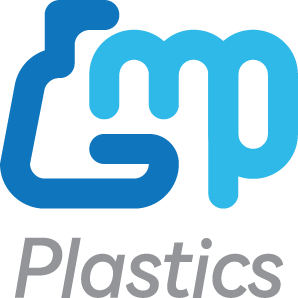Hey there, science enthusiasts! Ever wondered how doctors detect diseases, how researchers measure proteins, or how food safety experts spot allergens? The answer lies in a powerful laboratory technique called ELISA—that's short for Enzyme-Linked Immunosorbent Assay. Let's embark on a journey to uncover the magic behind ELISA kits and assays!
What is ELISA?
Imagine you have a tiny detective that can seek out and identify specific molecules in a complex mixture. That's essentially what an ELISA does! It's a plate-based assay technique designed to detect and quantify soluble substances like peptides, proteins, antibodies, and hormones. By immobilizing an antigen on a solid surface and introducing an enzyme-linked antibody, ELISA produces a measurable signal—usually a color change—that indicates the presence and amount of the target molecule.
The Four Flavors of ELISA
Just like ice cream comes in different flavors, ELISA assays come in various types, each suited for specific applications:
-
Direct ELISA:
- How it works: The antigen is immobilized on the plate, and a labeled antibody directly binds to it.
- Pros: Simple and quick with fewer steps.
- Cons: Less signal amplification, which might reduce sensitivity.
-
Indirect ELISA:
- How it works: The antigen is immobilized, then an unlabeled primary antibody binds to it, followed by a labeled secondary antibody that binds to the primary antibody.
- Pros: Increased sensitivity due to signal amplification.
- Cons: Potential for cross-reactivity from the secondary antibody.
-
Sandwich ELISA:
- How it works: A "capture" antibody is coated on the plate, the antigen binds to this antibody, and then a labeled "detection" antibody binds to the antigen, forming a sandwich.
- Pros: High specificity and sensitivity.
- Cons: Requires two antibodies that recognize different epitopes on the same antigen.
-
Competitive ELISA:
- How it works: The sample antigen competes with a labeled antigen for binding to an antibody.
- Pros: Useful for detecting small antigens that might be difficult to detect with other formats.
- Cons: Generally less sensitive and more complex.
Choosing the right type depends on your specific needs, such as the nature of the antigen, required sensitivity, and available antibodies.
Why ELISA is a Game-Changer
ELISA has revolutionized diagnostics and research due to its:
- Sensitivity: Capable of detecting minute amounts of a substance.
- Specificity: High precision in identifying target molecules.
- Versatility: Applicable in various fields from medical diagnostics to food safety.
- Quantitative Results: Provides measurable data that can be analyzed statistically.
Applications Galore!
ELISA isn't just a lab bench technique; it's a cornerstone in many fields:
- Medical Diagnostics: Detecting diseases like HIV, dengue, and COVID-19 by identifying specific antibodies or antigens in patient samples.
- Food Industry: Ensuring food safety by detecting allergens such as peanuts, milk, and eggs.
- Environmental Monitoring: Measuring pollutants and toxins in water and soil samples.
- Pharmaceuticals: Monitoring drug levels and immune responses during clinical trials.
Choosing the Right ELISA Kit
With a plethora of ELISA kits available, selecting the right one can be daunting. Here are some tips to guide you:
- Define Your Target: Know the specific molecule you want to detect and its characteristics.
- Check Sensitivity and Specificity: Ensure the kit can detect your target at the required levels without cross-reacting with other substances.
- Sample Compatibility: Confirm that the kit is validated for the type of sample you're testing (e.g., blood, urine, tissue extract).
- Read Reviews and References: Look for kits with positive feedback and citations in scientific literature.
- Consider the Format: Depending on your needs, choose between ready-to-use kits or those requiring some assembly.
Tips for a Successful ELISA Experiment
To get the most out of your ELISA, keep these pointers in mind:
- Follow Protocols Meticulously: Small deviations can lead to significant errors.
- Use Calibrated Equipment: Ensure all instruments are functioning correctly and are properly calibrated.
- Run Controls: Include positive and negative controls to validate your results.
- Optimize Sample Preparation: Properly prepare and store your samples to maintain their integrity.
- Be Mindful of Incubation Times and Temperatures: Consistency is key for reproducibility.
The Future of ELISA
As science and technology advance, so does ELISA. Innovations are making assays more sensitive, faster, and easier to use. Automation and high-throughput screening are becoming standard, allowing for the analysis of numerous samples simultaneously. Additionally, developments in antibody engineering and detection methods promise to expand the capabilities and applications of ELISA even further.
Final Thoughts
ELISA is more than just a laboratory technique; it's a vital tool that bridges the gap between research and real-world applications. From diagnosing diseases to ensuring the safety of our food, ELISA plays a crucial role in improving health and quality of life. So, the next time you hear about a medical test or a food safety check, remember the unsung hero behind the scenes—ELISA!
Stay curious, keep exploring, and remember: science is everywhere! 🧬🔍




